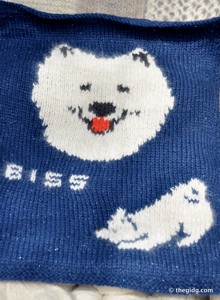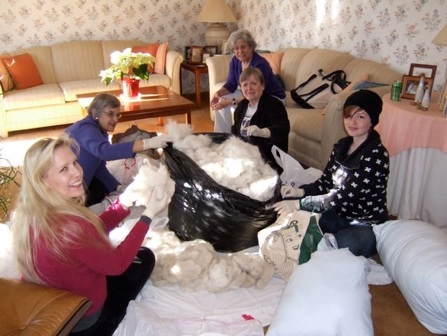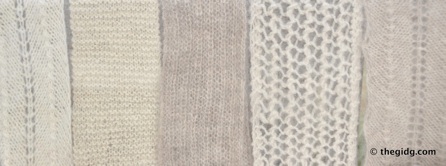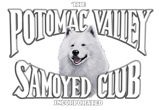Completed trophies for the 2011 PVSC Fall Specialty






Samoyed hair is not just for lint-rollers. It is also the base fiber component of a remarkably practical and versatile textile: Samoyed yarn. This yarn (which can be 100% Samoyed or blended with wool and other fibers) is beautiful in its natural state and can be dyed any color. It is also exceptionally warm and water-resistant, offering the wearer the same protection from the elements that helped Samoyeds in their historic feats of endurance leading the first explorers to the North and South Poles in the late-19th and early-20th centuries.
Samoyed hair is so warm that it is often blended with other fibers, such as wool, to “cool” it down.
Warmer than sheep wool and with the softness and “halo” of Angora rabbit, Samoyed yarn is transformed into gorgeous gloves, scarves, felted ornaments and other luxurious products by PVSC members skilled in needlecrafts.
Many PVSC members have contributed to the club’s FiberArts effort by donating the hair they comb out of their Samoyeds during routine grooming. The hair is best stored in cotton bags (such as pillowcases) or clean plastic containers with desiccant to absorb moisture and a non-toxic pest repellant such as cedar.
Prior to spinning into yarn, donated hair is washed and “carded.” Carding, which is essentially brushing (hand carders resemble slicker brushes), gets the hair fibers into alignment, and other fibers may be blended at this stage. The next step, spinning, twists the fibers into yarn.
Two PVSC members have spinning wheels and process yarn entirely at home. This hand-spun yarn tends to have a lighter, airier feel than commercial yarns. We have also shipped bags of hair to a woolen mill in Kentucky to be blended with merino wool and processed into a unique yarn according to our specifications.
How much Samoyed hair is required for a pair of mittens or a scarf hinges on several variables, including: yarn thickness, needle size, the knitting pattern and yarn composition (100% Samoyed or blended). PVSC member experience suggests that a little Samoyed hair goes a long way. In one recounting, a “medium-sized paper bag” of hair resulted in a large shawl and three pairs of baby booties. The scarves in the slideshow above each entailed about 130-160 yards of 50/50 Samoyed-wool yarn.
Samoyed yarn -- we call it “S’yarn” -- is a 100% organic product derived from a renewable resource (courtesy of our beloved and pampered Samoyeds). The process is less invasive than shearing sheep and less mysterious than harvesting worm secretions to make silk.
Though white, S’yarn is the epitome of “green.” In addition to being environmentally-correct, it is expensive. Hand-crafted Samoyed yarn scarves have fetched (another pun to excuse) hundreds of dollars at auction. A single pair of mittens can sell for over $100.
The experience of participating in the PVSC FiberArts group is priceless, with monthly gatherings, excursions to craft shows and demonstrations and countless hours serenely creating wearable products and unique ornaments.
PVSC S’yarn crafts are often presented as trophies at Potomac Valley Samoyed Club Specialties.
The Process
Samoyeds are a “double-coated” Arctic breed. The hair sought for yarn -- the undercoat -- consists of a dense, wooly hair which “blows” (i.e. sheds en masse) once or twice a year. The Samoyed’s outercoat is often described as “silver-tipped” and is comprised of coarse, longer hairs. The optimal hair for use in yarn varies with the individual dog but generally most comes from the ruff and shoulders. Lesser amounts may come from the back, sides, hips or belly.

PVSC FiberArts members sorting 20 lbs of sammy hair.
![1940 newsreel video of a British effort to use Samoyed hair to make clothes for soldiers in World War II.
[ click here ]](FiberArts_files/shapeimage_5.png)


